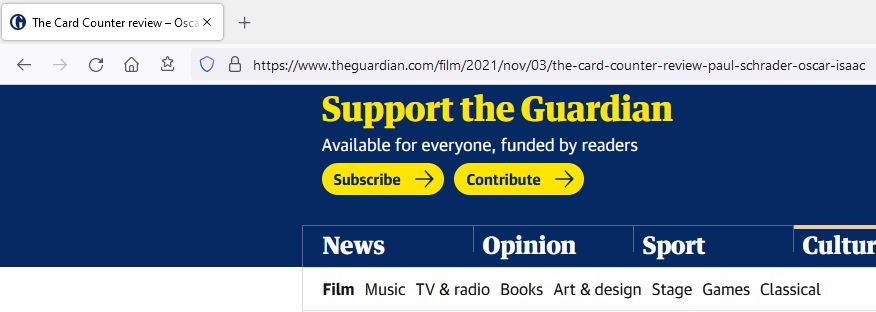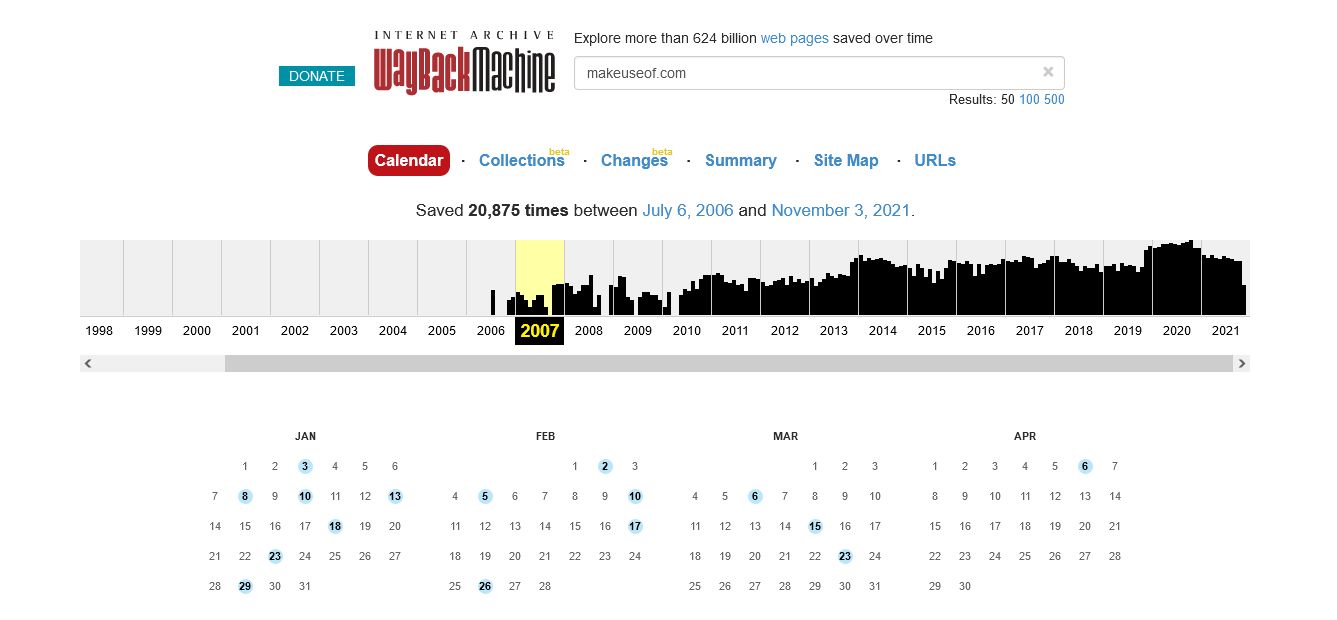Cite Upload Date or Last Edited Date
Sometimes, online articles don't display the date they were first published. That's frustrating when you need to cite that content or verify how contempo it is, especially for academic purposes.
There are various reasons why content might not show a publication appointment. Maybe the blogger has removed it and so that yous don't remember their work is outdated. Or perhaps the website simply isn't designed to show the publication date, perhaps so it's e'er able to pass as new.
Whatsoever the reason, sometimes you need to know the date of publication. As such, here are some simple methods to assist you figure out when that content was born, even if it's just a crude date.
1. Look at the Byline
This is an obvious one, merely first cheque that the date isn't displayed anywhere on the folio. It'll commonly be near the top of the postal service, perhaps alongside the author's byline. Some publications may identify it at the end of the commodity.
If you're lucky, the page will display two dates: ane of the original publication and the 2d of when it was updated (if applicable).
2. Check the URL

Many websites display the date of publication within the URL for the page. This is especially true of blogs and news sites, where content is published regularly and relevancy is important.
Expect in your browser's address bar to meet if the URL is structured to show the date. In the screenshot case to a higher place from The Guardian, the date of November three, 2021, is represented in the URL by /2021/november/03.
Something to exist enlightened of is that these are oftentimes permalinks—URLs that intend to remain the same indefinitely. Every bit such, fifty-fifty if the folio is updated, the URL will remain the aforementioned.
If you're dealing with content from a pop source, the comments volition normally have started on the day of publication, or thereabouts. Scroll to the bottom of the page, and find the oldest comment. This will give you a practiced gauge for when that article first went live.
If the comment doesn't display the exact date, but rather something similar "438 days agone", you can apace find out what that means by typing information technology into Wolfram Alpha.
four. Analyze the Images
Along with looking at the URL of the page, y'all can also wait at the URLs of whatever images inside the article. Note those final words are important; in that location'south no point looking at the URL of a generic image on the folio, like the logo, since information technology'll be used beyond the entire website.
When you lot've plant a suitable image, correct-click it and click Open Image in New Tab. Then check the URL bar, using the advice detailed in tip one.
However, this can be unreliable for a scattering of reasons:
- The epitome was uploaded before the article'due south publication.
- The epitome wasn't specifically uploaded for the commodity yous're looking at.
- The image is stored externally or in a generic image library.
Nonetheless, using this technique alongside the others tin be a good style to double-check the date.
v. Cheque the Source Code

Fifty-fifty though a folio's publication engagement isn't front-facing, it doesn't mean the site isn't storing that data. Equally such, information technology's worth checking the folio's source code to run into if you can unearth anything. To do this, right-click the page and click View folio source (the exact wording may differ depending on your browser).
Source code isn't designed to be read by the boilerplate person, then you may have a hard time understanding what you're looking at. To assist you out, search the document for terms like "engagement" or "publication" or similar. This might have yous to a tag within the source code which denotes when the page was published.
6. Search Google

Sometimes, Google tin effigy out when something was publishing by scanning a page's HTML. If so, it'll include information technology in the search results. Simply copy the article's URL and Google search it. The date displays beneath the title of the folio.
Accept annotation that this appointment isn't guaranteed to be correct. It tin be the date of when Google last noticed an update to the page, which isn't necessarily the same as the original publication date. Nonetheless, for static articles and blog posts, this date is usually pretty reliable.
vii. Use The Wayback Auto

Internet Archive's Wayback Machine is a service that athenaeum the spider web. It'southward constantly scanning the entire cyberspace, finding pages, and archiving them in the system. It not only does this for new pages, but whenever those pages update besides.
This means that you can type a URL into the Wayback Auto and become a rough idea of when the folio went alive. You tin can likewise see how the page has changed over time. This is very useful for when you need to bear witness that something was on a folio on a specific appointment.
The primeval date displayed on the Wayback Machine will be an indicator as to when, roughly, that content was published. It's not exact because the Wayback Machine won't always annal something on the 24-hour interval of publication or change.
Reference and Cite Websites With Ease
Use all of these tips together and you should be able to figure out the rough publication appointment of an commodity, if non the exact one. If you lot nonetheless don't have any luck, you could try to contact the website in question. They may be willing to oblige your question.
For historical accuracy, it's extremely important to know when something was published. When the globe moves at such a fast pace, information tin can get outdated quickly; knowing the date of publication can alleviate this. Information technology'southward too vital when citing pages in academic essays and papers.
Near The Author
Source: https://www.makeuseof.com/tag/find-date-published-post-insanely-simple-tips/

Postar um comentário for "Cite Upload Date or Last Edited Date"